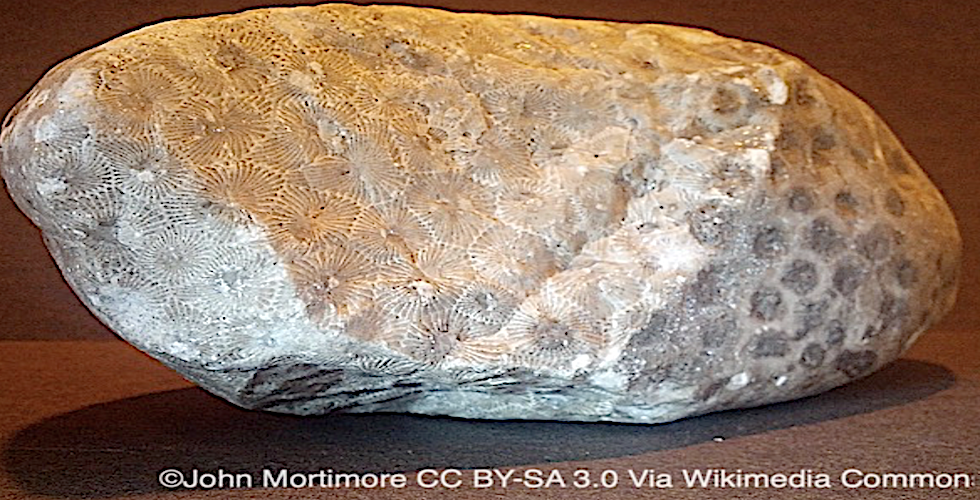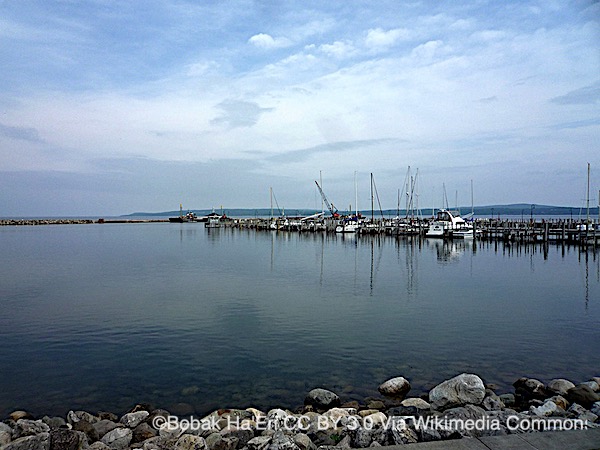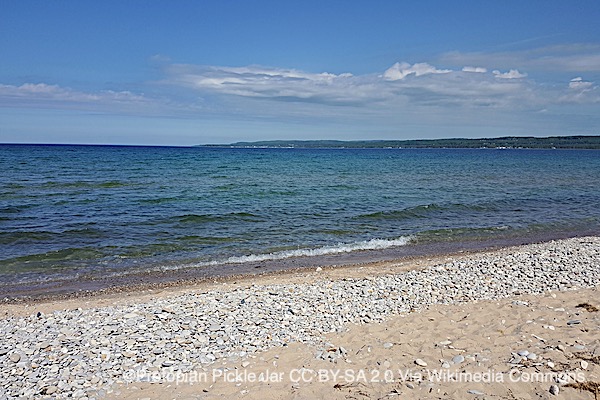
Petoskey, Michigan a Rock Collectors Paradise
Dan R. Lynch, author of Petoskey Stone: Finding, Identifying, and Collecting Michigan’s Favorite Fossil, takes us on a visit to the town of Petoskey. Along the way he tells us where to look, from obvious spots like Lake Michigan beaches and Petoskey State Park to lesser known locales, including gravel pits and roadbeds.
The town of Petoskey is a resort community that enjoys ample tourism, largely focused on the area’s natural beauty, including the beaches where Petoskey stones can be found. Historic downtown Petoskey, called the Gaslight District, is a hub for many of the smaller communities in northwestern Michigan, so Petoskey is still an important center for regional trade.

Tourists and collectors snap up every available Petoskey stone find, as wind and waves reveal them in and near Petoskey. However, that is not to say Petoskey stones are rare—on the contrary, Petoskey stone is still abundant throughout the Little Traverse Bay region. But savvy collectors know that they’ll have better luck on the beaches less frequented, particularly those on the southern shore, between Charlevoix and Petoskey. If you don’t have luck finding one, you can always visit one of the many shops in the area selling Petoskeys.
Finding Petoskey stones is not difficult, as they are widely available to persistent visitors of the northwestern and northeastern shores of Michigan’s Lower Peninsula.
Part of the reason Petoskey stone is so popular is because it’s accessible for almost everyone to find. Finding Petoskey stone does not require any special skills or equipment, simply the desire to venture to natural spaces and turn over every pebble at your feet.
Because it’s a variety of limestone, Petoskey stone can be tricky to spot among the multitude of other limestone and shale pebbles prevalent in the region, especially when the stones are dry. As weathering dulls the details of Petoskey stone, dry specimens are disguised as a chalky brown rock. For this reason, if you suspect a stone is a Petoskey stone, get it wet; water will help bring out the contrast in the fossil patterns, if present.
Thanks to the glaciers, specimens are not only widespread across the northern portions of Michigan’s southern peninsula, but they are abundant as well. Many beaches, dunes, and rivers along Lake Michigan and Lake Huron, as well as some inland gravel exposures and dig sites, yield specimens of H. percarinata and other Hexagonaria fossils.
Areas that see lots of weathering and erosion, such as beaches and rivers, will produce the well-worn, rounded specimens that we see in abundance. More protected or more inland sites, such as gravel pits or other exposures of glacial gravel and sand, can yield more rough, ragged, sculptural specimens that better reflect the coral as it originally grew.

The biggest difference between these two kinds of locales, however, is accessibility. Many of the best inland spots for hunting Petoskey stone are privately owned and cannot be visited without permission.
In addition, the number of specimens they may produce can be sparing. Most of the best beaches, however, are public, and in many places, including Petoskey State Park, collecting is actually encouraged. And thanks to wave action, specimens are plentiful and replenished often.
If you’re in the Little Traverse Bay area, all it takes is some sharp eyes and patience (although a bottle of water will help). The best way to begin your search is by checking virtually any pebbles or masses of limestone for fossil features. The distinctive honeycomb patterning is Petoskey stone’s key defining trait, and wetting stones is a simple way of aiding identification. You may also find other fossils in the limestone.
If you enjoyed this post, sign up for our newsletter now!
Photo Credits
Petoskey Marina: Bobak Ha’Eri [CC BY 3.0 (https://creativecommons.org/licenses/by/3.0)], from Wikimedia Commons
Petoskey State Park: Protopian Pickle Jar [CC BY-SA 2.0 (https://creativecommons.org/licenses/by-sa/2.0)], via Wikimedia Commons


